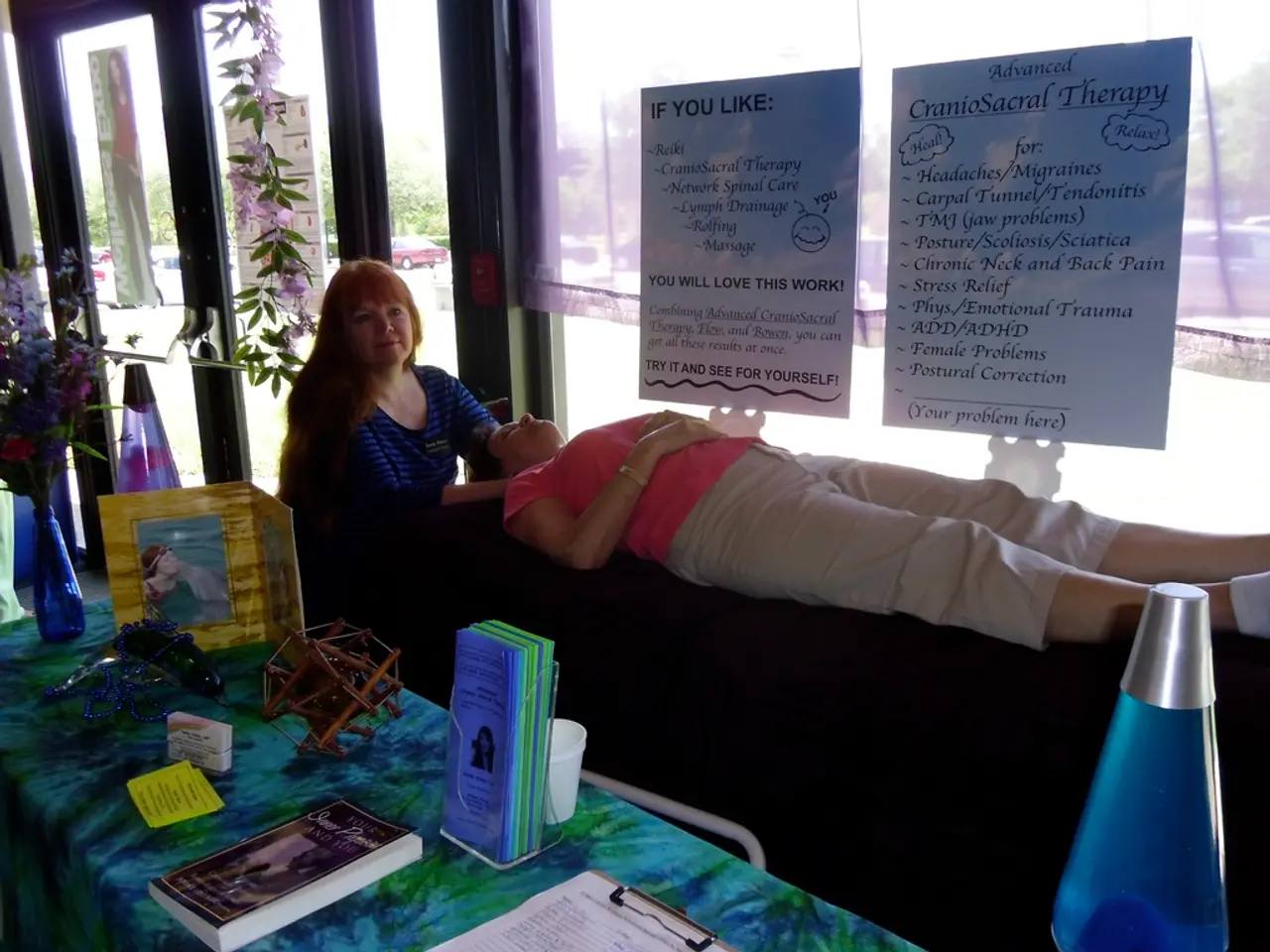Anxiety Episodes and Chronic Anxiety Disorder
Panic disorder with agoraphobia is a complex condition characterized by recurrent panic attacks and a fear of being in situations where escape might be difficult or a panic attack might occur. This disorder can be overwhelming, but understanding its causes and symptoms, as well as available treatment options, can help those affected manage their condition.
Symptoms of Panic Disorder with Agoraphobia
Panic attacks, the primary symptom of panic disorder, are intense waves of fear that can strike suddenly and without warning. They are characterized by physical symptoms such as shortness of breath or hyperventilation, heart palpitations or racing heart, chest pain or discomfort, trembling or shaking, choking feeling, sweating, nausea or upset stomach, feeling dizzy, light-headed, or faint, numbness or tingling sensations, hot or cold flashes, and fear of dying, losing control, or going crazy.
Repeated panic attacks are often triggered by specific situations, such as crossing a bridge or speaking in public. Agoraphobia, a complication of panic attacks and panic disorder, involves a fear of having a panic attack in situations where escape would be difficult or embarrassing. This fear can lead to avoidance behaviour, causing individuals to limit their activities and social interactions.
Causes of Panic Disorder with Agoraphobia
The exact causes of panic disorder and panic attacks are unclear, but they are believed to involve a combination of factors. Anxiety disorders are thought to trigger the body's fight-or-flight response without actual physical danger, leading to physiological changes like increased heart rate and metabolic activity.
Genetic and inherited traits can also predispose individuals to anxiety disorders. Life experiences and trauma often trigger or worsen anxiety disorders in vulnerable people. Medical conditions, such as heart disease, respiratory disorders, thyroid problems, chronic pain, and neurological issues, may contribute to or cause anxiety symptoms. Substance use and withdrawal from drugs, alcohol, or medications can also provoke panic attacks.
Conditions like post-traumatic stress disorder (PTSD), generalized anxiety disorder (GAD), and other mood disorders often co-occur with panic disorder and increase the risk. Agoraphobia itself may emerge as a fear of having panic attacks in specific situations, leading to avoidance behaviour.
Treatment and Self-Help Techniques
Treatment for panic disorder with agoraphobia typically involves a combination of medication and therapy. Antidepressants take several weeks to work and should be taken continuously, not just during a panic attack. Benzodiazepines act quickly to provide relief of panic attack symptoms but can be addictive and are only intended for short-term use.
Cognitive behavioral therapy helps individuals look at their fears in a more realistic light, while exposure therapy allows individuals to experience the physical sensations of panic in a safe and controlled environment. Exposure therapy for panic disorder with agoraphobia includes facing feared situations until the panic begins to go away.
Self-help techniques for panic attacks include learning about panic and anxiety, experimenting with relaxation techniques, and practicing deep breathing exercises. The cyclic sighing exercise involves inhaling deeply, taking a shorter inhale, and exhaling slowly for five minutes. The paced breathing exercise involves inhaling for two to four seconds, holding for a moment, and exhaling for twice as long.
Support and Coping
Joining a support group can provide comfort and share coping techniques for people with anxiety disorders, panic disorder, or panic attacks. Organizations such as NAMI Helpline, Find a Therapist, Support Groups, Anxiety UK, Anxiety Canada, SANE Help Centre, Helpline (India), and Vandrevala Foundation provide information and support for those suffering from anxiety disorders.
In times of a panic attack, staying calm, focusing on breathing, doing something physical, getting your loved one out of their own head, and encouraging them to seek help can be helpful. Avoiding smoking, alcohol, and caffeine can help reduce the likelihood of panic attacks. Engaging in regular exercise can help reduce overall anxiety levels and reduce the severity of panic attacks.
In summary, panic disorder with agoraphobia is a complex condition caused by a combination of factors, including anxiety, genetic predisposition, environmental triggers, and sometimes medical or substance-related issues. With the right treatment, self-help techniques, and support, it is possible to manage this condition and live a fulfilling life.
Mental Health Connection: Living with panic disorder and agoraphobia can have profound impacts on one's overall health-and-wellness, particularly mental health. Managing anxiety and fears requires a comprehensive approach, including professional treatment, self-care practices, and community support.
Nutritional Responsibility: Proper nutrition plays a role in maintaining overall health, and for those living with anxiety disorders such as panic disorder and agoraphobia,Making nutritious food choices can contribute to improved mental health and reduced anxiety symptoms. Maintaining a balanced diet that includes lean proteins, whole grains, fruits, vegetables, and healthy fats can support a healthy body and mind.




